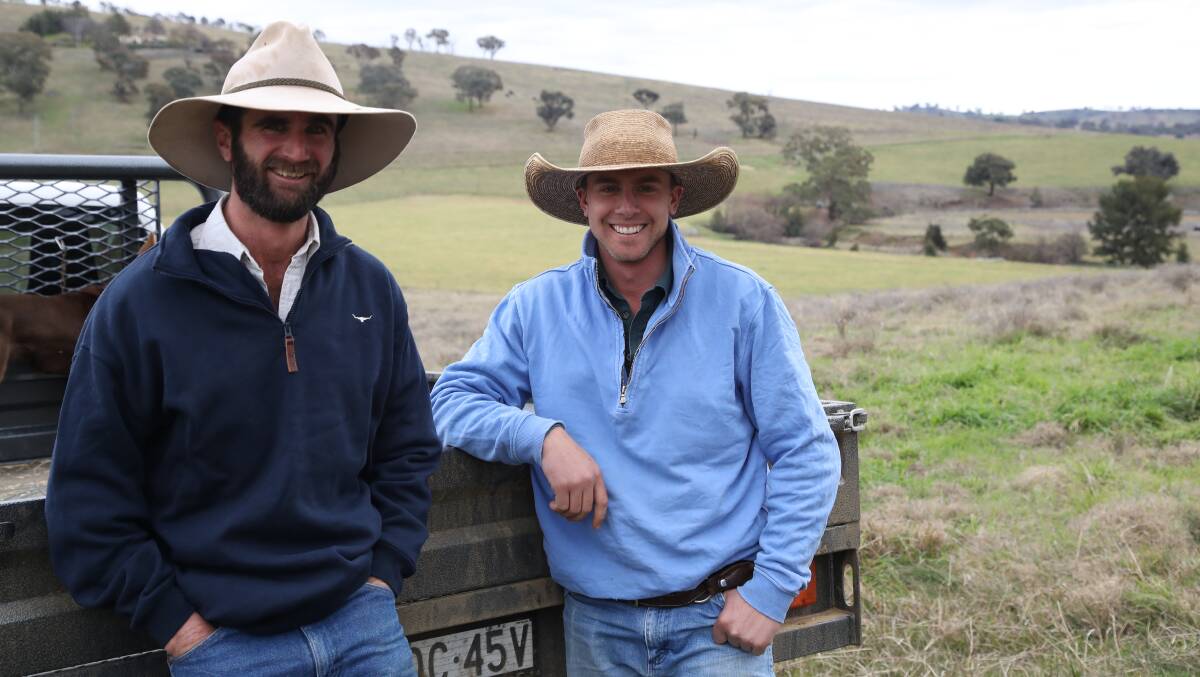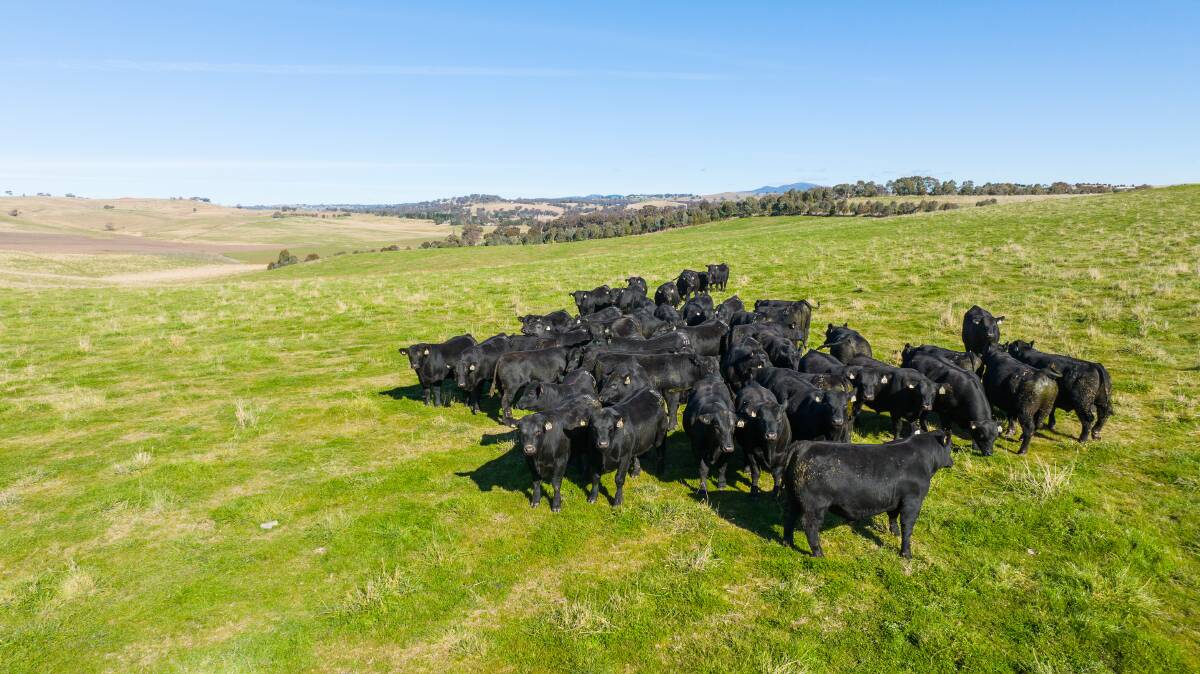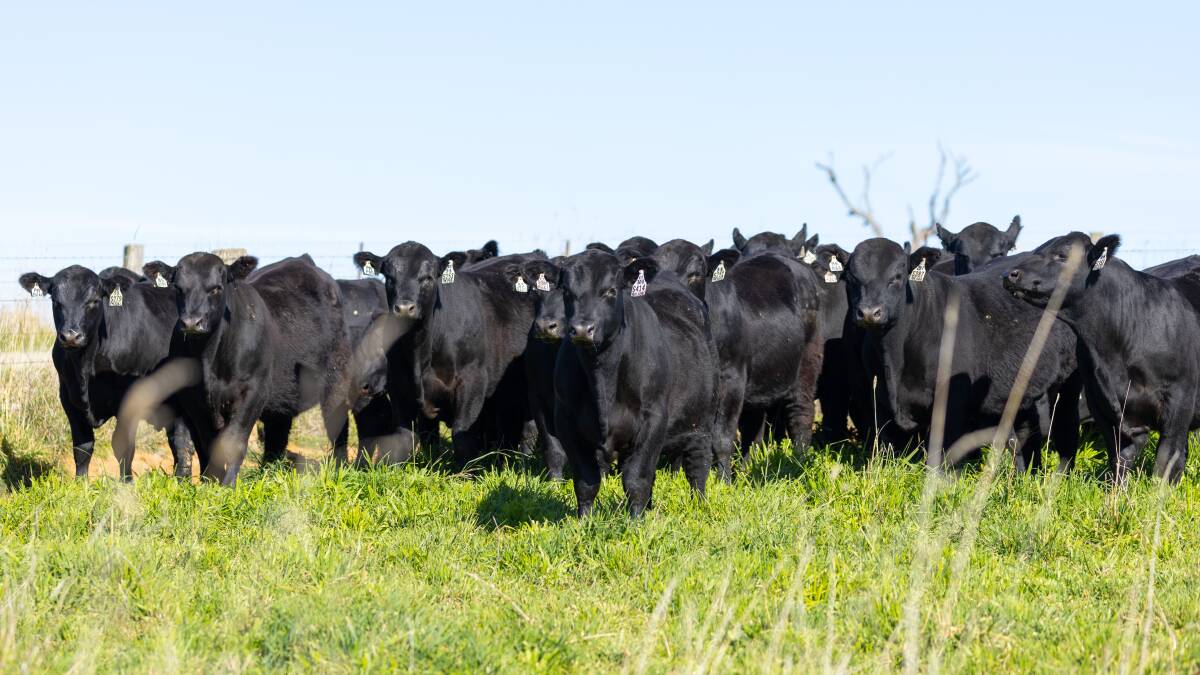The greatness of Gilmandyke

This is branded content for Gilmandyke Pastoral
The morning sun shines down on the sleek black cattle as they amble in the yards.
Between the magnificent Angus cows, a woman wanders in the rising dust, carefully inspecting each female.
Despite being 81 years old, Belinda Bateman's passion for her Gilmandyke Angus cattle hasn't diminished.
It was a dream begun by Mrs Bateman and her late husband Edmund, and has produced some truly spectacular cattle over the decades.
And her general manager Wade Peatman and stud manager Pete McNamara are making sure this passion is carried into the future.
Starting strong
The Batemans' journey of breeding cattle first began in 1971, when Edmund and Belinda bought their first property at Triangle Flat near Rockley, NSW.
But it wasn't long before they were producing head-turning stud cattle - starting with Murray Greys, as well as Charolais and Salers.
Their name was synonymous with Murray Greys.
"Murray Greys were huge during the 1980s and the Batemans were the people to beat at Sydney Royal," Mr Peatman said.
"They won the Hordern All Breeds Trophy a number of times. They were a pretty unstoppable force in the stud game."
In 1993, they expanded the operation with the addition of Kangaroobie and Tantallon in the high country near Orange, NSW.
"This was the start of the expansion into the Orange region and building what is now almost 3600 hectares at Orange," Mr Peatman said.
Over the next decade, they grew their dynasty even more. Today they run 8000ha across the region, including Orange, Molong, Rockley and Harden, as well as some country at Bowral.
Despite their love of Murray Greys, their move to Angus was very deliberate.
"The cow herd was Murray Grey-based, but the Angus influence had changed markets - market accessibility was far better with Angus. Rather than giving up on 50 years of breeding Murray Greys, we made the decision to convert the herd to black," Mr Peatman said.

Gilmandyke bought its first registered Angus females in 2006 at the Narrangullen Angus herd dispersal.
"There was around 100 years worth of breeding in that herd, and they were the 86 foundation females we bought," Mr Peatman said.
Gilmandyke registered its own first stud females in 2007, keen to breed its own bulls.
"The primary focus was to breed 30 or 40 bulls for ourselves. Our commercial herd is our biggest client still to this day, and it comes first. But as we expanded, we moved into the stud market," Mr Peatman said.
Focus on females
From the beginning, females were the key.
And this has stayed constant throughout the years - something Mr McNamara is very proud of.
"The family has maintained the same philosophy of breeding cows its whole life," he said.
"They have been strong-headed about it, because they are so passionate. The functionality of a fertile female is what has carried them through. We've always been focused on having a fast-growing animal."
Mr McNamara said as Breedplan developed and traits were recorded, the stud had been able to hone in on docility and structure.
Both Mr McNamara and Mr Peatman enjoy the tradition of working with Belinda and learning from her.
"I like going through a mob of cows with Belinda," Mr McNamara said. "She will tell you which is a beautiful cow. It's what means the most. You couldn't do it without them."
Edmund passed away a decade ago, but his passion has lingered.
"It was a real passion for him to breed and be successful," Mr Peatman said.
"I can still remember spending time with him in the yards. He was an extremely busy man, with huge businesses outside the agriculture sector, but he still found the time."
Mr Peatman said the resilience of the Bateman family was astounding.
"I remember a story Belinda tells of being on the road droving cattle just trying to keep them alive during droughts in the 1980s," Mr Peatman said.
"She has a brilliant eye for cattle, and there is a real family focus in the stud. There has been a lot of heritage built up by Edmund and Belinda."
But something that makes both men hopeful is the passion continuing on through the generations.
"Behind Belinda, there is a generation coming through that is heavily involved. There is enthusiasm there," Mr Peatman said.
"Even down to the grandkids who turn up and help in the school holidays. There are many years to come."
But the passion doesn't stop with the family.
Both Mr Peatman and Mr McNamara show unstinting dedication and understandable pride in what is being produced.

To the future
Today Gilmandyke runs between 3000 and 3500 cows depending on the season, usually sitting around 500 stud cows.
But Gilmandyke's properties are run as truly commercial operations, and it's not just cattle.
"We run 3000 to 5000 Merino ewes, we crop about 1000ha of grain and oilseed," Mr Peatman said.
"I love where the herd is today. I think our ability to reach quite a few markets is really important. It gives us flexibility, and we've proven that our cattle can perform on grass, in a feedlot and on the dinner plate."
Mr McNamara is thrilled with the Gilmandyke herd.
"The two traits I am most proud of are our docility and structure. For both those traits in Breedplan, our herd average is in the top 10 per cent for the Angus breed," Mr McNamara said.
"We're proud that our cattle are quiet and structurally sound, and that goes hand-in-hand with longevity.
"Looking forward, we are looking forward to introducing some new genetics that are going to stay in line with the fundamentals like structure and temperament, and continue to improve our carcase performance.
"I feel like we've got the herd exactly where we want it. It solidifies that our herd can perform under any circumstances, so we can utilise different traits and be more selective with our breeding programs."
This is branded content for Gilmandyke Pastoral


